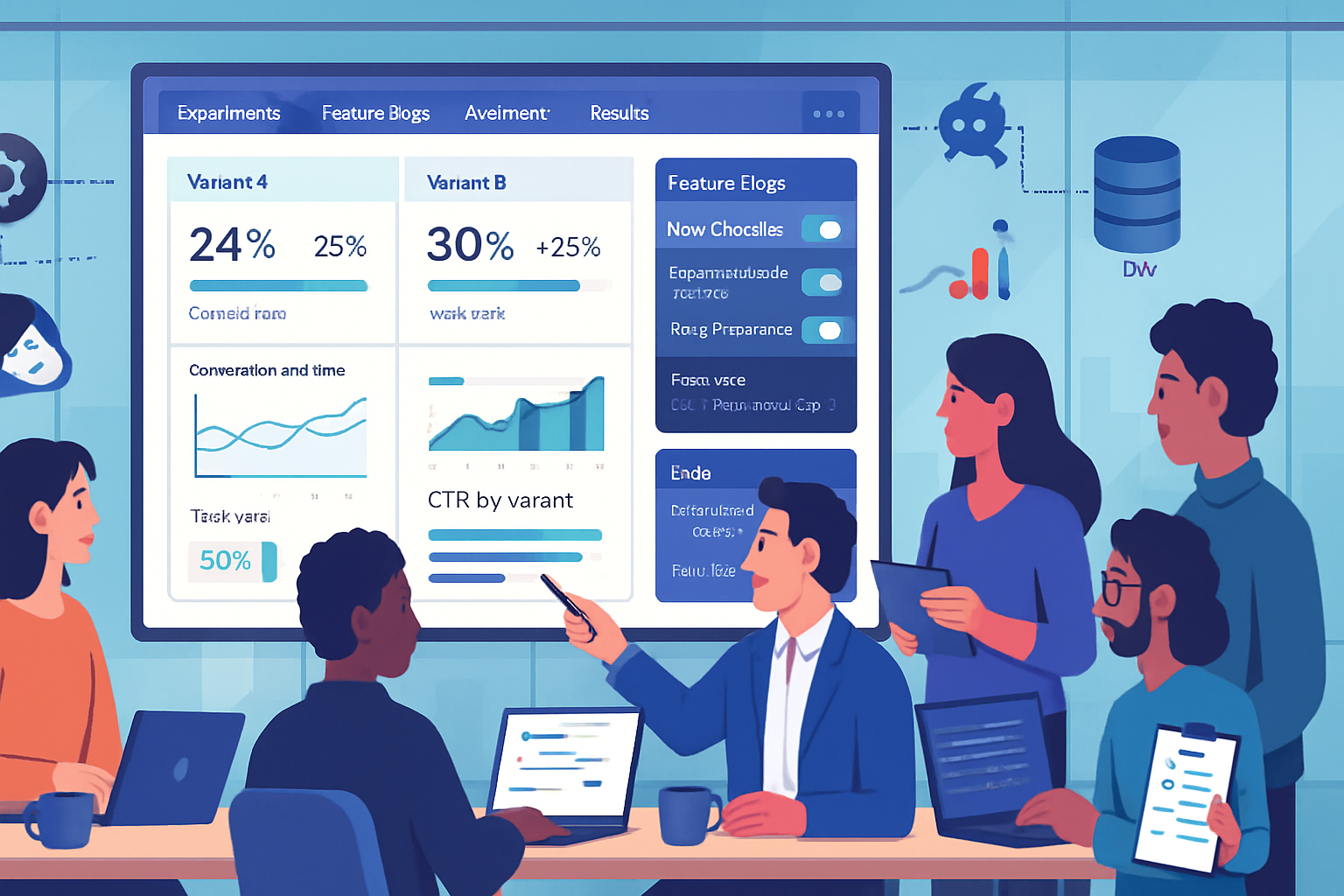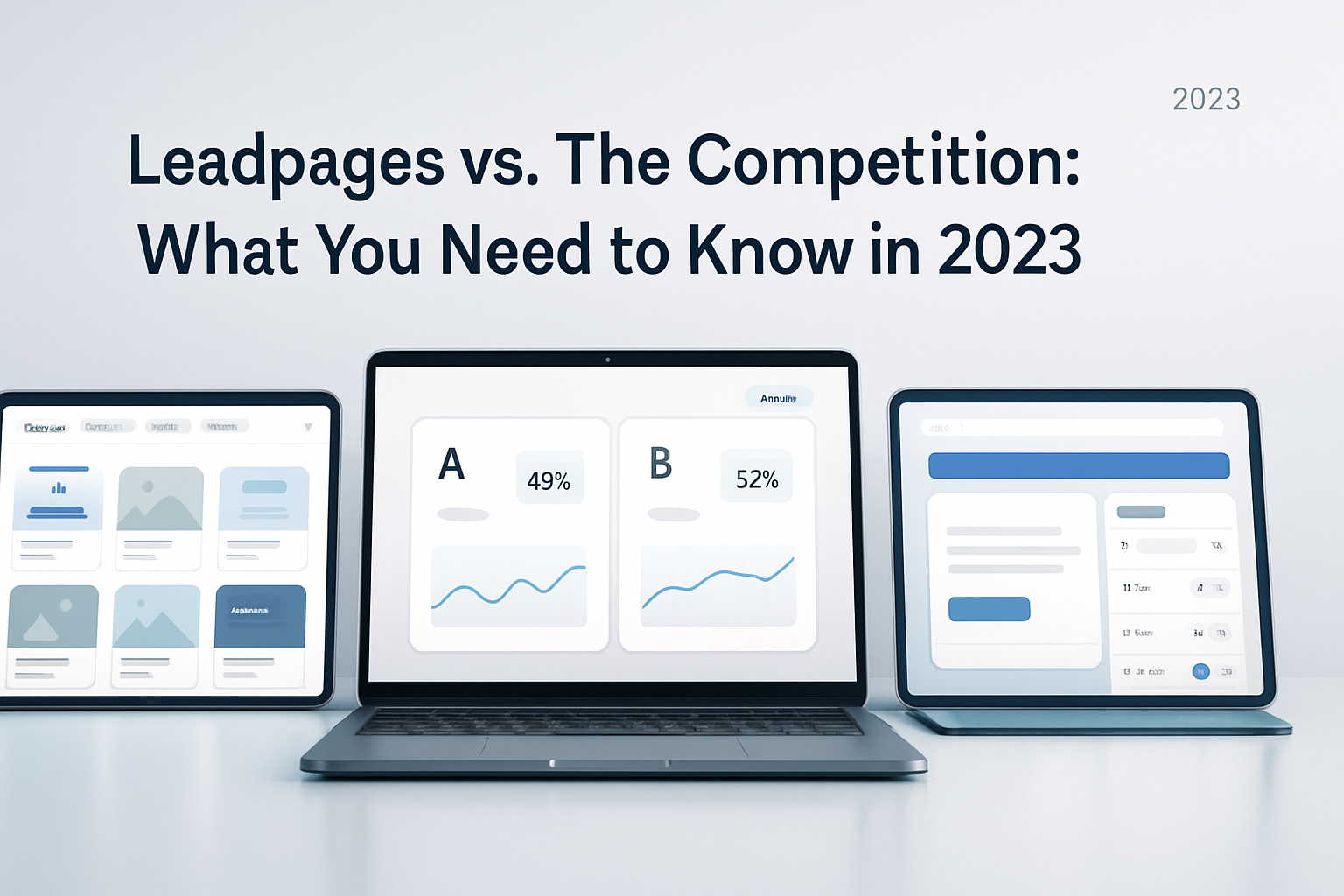· marketing · 6 min read
Unlocking the Full Potential of Optimizely: 10 Tips to Boost Your A/B Testing Game
Go beyond basic splits. Learn 10 lesser-known, actionable Optimizely tips - from feature flags and custom metrics to robust QA, data exports, and statistical guardrails - that speed up experimentation, improve signal detection, and drive better conversions.

Why go deeper than the visual editor?
Optimizely is more than a WYSIWYG A/B tool. It’s a full experimentation platform that combines feature flags, web and full‑stack SDKs, integrations, and a robust statistics engine. Unlocking some less obvious features and workflows helps you run cleaner experiments, detect real effects faster, and reduce risk during rollouts.
Below are 10 practical tips you can apply today - each includes why it matters, how to do it, and concrete examples or checklists.
Tip 1 - Use Feature Flags and Full‑Stack for Progressive Rollouts
Why: Feature flags let you decouple deployment from release and apply experiment logic server‑side or in backend services. This enables progressive rollouts, reliable targeting, and experimentation in non‑UI flows (email, API responses, mobile, etc.).
How:
- Implement flags with the Optimizely Full‑Stack SDKs (Node, Java, Python, etc.).
- Start with a small percentage of traffic, monitor key signals, then increase exposure.
- Use flags to disable features quickly if negative signals appear.
Example (Node Full‑Stack):
const { createInstance } = require('@optimizely/optimizely-sdk');
const optimizely = createInstance({
datafile: require('./optimizely_datafile.json'),
});
const userId = 'user_123';
if (optimizely.isFeatureEnabled('new_checkout', userId)) {
// show new checkout flow
} else {
// show legacy flow
}Docs: Optimizely Feature Flagging and Full Stack docs are helpful starting points: https://docs.developers.optimizely.com/
Tip 2 - Track Activation Events and Custom Metrics (not just pageviews)
Why: Activation events (the event that confirms a user was actually exposed to the treatment) and custom metrics reduce false negatives and improve statistical power by focusing on users who actually saw the change.
How:
- Define clear activation events (e.g., DOM element rendered, API response returned).
- Set primary metrics to track business outcomes (revenue, signups) and secondary guardrail metrics (load time, error rate).
- Use custom numeric metrics (value-based) to capture revenue per user instead of binary conversion.
Web example (triggering an event):
window.optimizely = window.optimizely || [];
window.optimizely.push({
type: 'event',
eventName: 'signup_complete',
});Docs: See event and metric configuration in the Optimizely docs: https://docs.developers.optimizely.com/
Tip 3 - Use Mutual Exclusion and Experiment Groups to Prevent Cross‑Contamination
Why: Running overlapping experiments on the same elements or workflows can create interference and noisy results. Mutual exclusion (or dedicated experiment groups) ensures a user is only in one relevant experiment for a particular feature.
How:
- Group experiments that touch the same funnel or DOM element into mutually exclusive groups.
- Use audience targeting and exclusion rules to limit overlapping exposures.
- Consider bucketing logic server‑side via Full‑Stack to enforce exclusivity consistently across clients.
Tip 4 - Make the Most of Optimizely’s Stats Engine and Guardrails
Why: Optimizely’s Stats Engine handles significance calculations and corrections for multiple comparisons. Understanding and applying guardrails prevents premature decisions and reduces false positives.
How:
- Familiarize yourself with Optimizely’s statistical assumptions and multiple comparison options.
- Use guardrail metrics (e.g., error rate, performance) and avoid making decisions on secondary metrics alone.
- Predefine stopping rules (minimum sample size, minimum test duration) and avoid peeking without correction.
Docs: Read about Optimizely’s Stats Engine and experiment analysis details: https://help.optimizely.com/hc/en-us/articles/115001024888
Tip 5 - Speed Up QA with the Optimizely Debugger and Targeting Overrides
Why: Fast, reliable QA saves time and avoids shipping broken experiences to users.
How:
- Use the Optimizely Debugger browser extension to inspect active experiments and attributes.
- Create a QA audience (based on IP, a special cookie, or user attribute) that forces you into specific buckets.
- Keep a reproducible URL or snippet to force variants during QA.
Quick QA checklist:
- Confirm activation event fired.
- Verify variant DOM/CSS changes across breakpoints.
- Validate tracking events appear in Optimizely and downstream analytics.
Docs: Optimizely QA and debugging tools: https://docs.developers.optimizely.com/
Tip 6 - Integrate Optimizely with Your Analytics & Data Warehouse
Why: A/B test decisions should be grounded in holistic data (marketing, backend, product). Exporting raw events or piping experiment data into BI tools enables richer analysis and consistency with business reporting.
How:
- Enable Optimizely data export or use webhooks to stream events into BigQuery / Redshift.
- Integrate with analytics platforms (Google Analytics, Mixpanel, Segment) to layer experiment buckets onto existing funnels.
- Reconcile Optimizely event timestamps with backend logs for attribution accuracy.
Docs: Data export and integration docs: https://docs.developers.optimizely.com/
Tip 7 - Use Audience Attributes for Personalization and Smarter Targeting
Why: Audience targeting is more powerful when you use visitor attributes from your backend or CDP. This reduces noise and lets you test variants on precisely the right segments.
How:
- Pass user attributes (subscription status, lifetime value, country, product usage) to Optimizely so audiences reflect business logic.
- Test hypotheses on segments where the treatment is most likely to succeed (e.g., high LTV users).
Example (Full‑Stack tracking with attributes):
optimizely.activate('experiment_key', userId, { plan: 'pro', country: 'US' });
optimizely.track('purchase', userId, { value: 199 });Tip 8 - Automate Experiment Reporting and Post‑Test Analysis
Why: Manual reporting kills velocity. Automation saves analysts’ time and enforces consistent result interpretation.
How:
- Export experiment data (Optimizely raw events) into your BI and create templated dashboards (exposure, conversion, lift, CI).
- Automate post‑test checks - sampling bias, novelty effects, segment breakdowns, and business impact (lift × baseline volume × ARPU).
- Keep an experiment catalog with hypotheses, segments, and outcomes.
Pro tip: Calculate expected business impact per week/month to judge whether significant effects are practically meaningful.
Tip 9 - Use Sequential Rollouts with Kill Switches for Risk Management
Why: Big launches carry risk. Gradual rollouts let you detect regression early and stop fast with minimal impact.
How:
- Deploy to 1–5% first, monitor metrics and logs, then gradually ramp.
- Automate health checks (latency, error rates) and wire them to flag/disable the feature if thresholds are exceeded.
- Combine rollout rules with server‑side feature flags so you can remove exposure immediately.
Tip 10 - Build a Strong Experiment Culture: Hypotheses, Pre‑Registration, and Knowledge Sharing
Why: The tools help, but the team and processes matter most. A strong experimentation culture scales impact and learning.
How:
- Use a short hypothesis template - Problem → Insight → Idea → Metric → Minimum Detectable Effect → Audience.
- Pre‑register experiments with sample size and stopping criteria to avoid biased reads.
- Publish learnings in an experiment repository (what you tested, why, result, next step) and hold regular review sessions.
Hypothesis template example:
- Problem - Checkout dropoff at payment page
- Insight - 35% abandoners cite payment options
- Idea - Add one‑click wallet option
- Primary metric - Completed purchases (30 days)
- MDE - 3% relative lift
- Audience - Mobile users in US
Quick Checklist to Put These Tips into Practice
- Add feature flags for all risky releases and roll out progressively.
- Define activation events and at least one revenue metric per experiment.
- Group conflicting experiments into mutually exclusive sets.
- Predefine sample sizes and stopping rules; avoid ad‑hoc peeking.
- Use QA audiences and the Optimizely Debugger to validate experiments.
- Route Optimizely data to your data warehouse for automated reports.
- Enrich audiences with visitor attributes from your backend/CDP.
- Automate dashboards and compute business impact.
- Watch health metrics during rollouts and have kill switches ready.
- Keep a central experiment catalog and hold post‑mortems.
Resources and Further Reading
- Optimizely Developer Docs: https://docs.developers.optimizely.com/
- Optimizely Help (Stats Engine & Analysis): https://help.optimizely.com/
- Optimizely Data Export & Integrations: https://docs.developers.optimizely.com/
By combining Optimizely’s feature flags and Full‑Stack SDKs with rigorous activation events, mutual exclusion, QA rigor, data integrations, and a disciplined experiment culture, you’ll extract more signal from every test and make safer, faster decisions. Start with one or two of the tips above - for many teams, adopting activation events and progressive rollouts yields the fastest lift.



